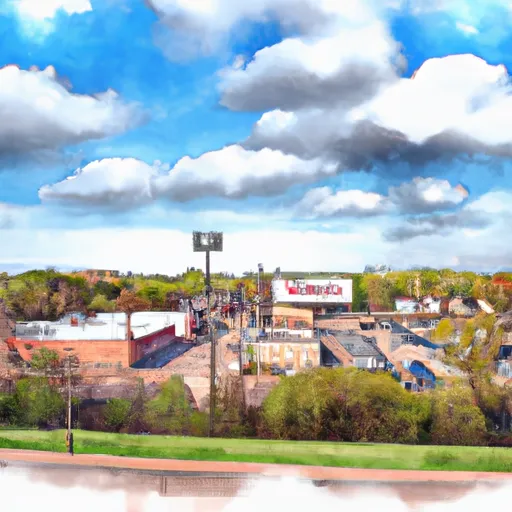-
 Snoflo Premium
Snoflo Premium
Get unlimited access to all our content
With no Ad interruptions! - Start Your Free Trial Login with existing account
Swatara
Eden Index
Climate
5.2
•
Recreation
3.1
•
Community
•
Safeguard
3.2/10

Swatara is a small town located in northern Minnesota, offering a picturesque setting surrounded by natural beauty. The town experiences a continental climate, characterized by cold winters and warm summers. Average temperatures range from around 10°F (-12°C) in winter to 80°F (27°C) in summer, with snowfall common during the colder months.
Hydrologically, Swatara is situated near the confluence of several rivers and streams. The town is home to the mighty Mississippi River, which provides excellent opportunities for water-based activities such as boating, fishing, and kayaking. Additionally, the nearby Rice and Willow Rivers offer scenic canoeing and tubing experiences.
Outdoor recreation enthusiasts will find plenty of opportunities in Swatara. The surrounding forests provide ample space for hiking, camping, and wildlife spotting. Hunters can enjoy the abundant game found in the region, including deer, grouse, and waterfowl. For those interested in winter sports, the area offers opportunities for cross-country skiing, snowshoeing, and snowmobiling.
Overall, Swatara provides a serene and nature-filled environment, perfect for those seeking outdoor adventures and a chance to immerse themselves in the beauty of northern Minnesota.
What is the Eden Index?
The Snoflo Eden Index serves as a comprehensive rating system for regions, evaluating their desirability through a holistic assessment of climate health, outdoor recreation opportunities, and natural disaster risk, acknowledging the profound impact of these factors on livability and well-being.
Climate Health Indicator (CHI): 5.2
Swatara receives approximately
711mm of rain per year,
with humidity levels near 82%
and air temperatures averaging around
5°C.
Swatara has a plant hardyness factor of
3, meaning
plants and agriculture in this region thrive during a short period during spring and early summer. Most
plants will die off during the colder winter months.
By considering the ideal temperature range, reliable water supplies, clean air, and stable seasonal rain or snowpacks, the Climate Health Indicator (CHI) underscores the significance of a healthy climate as the foundation for quality living.
A healthy climate is paramount for ensuring a high quality of life and livability in a region, fostering both physical well-being and environmental harmony. This can be characterized by ideal temperatures, reliable access to water supplies, clean air, and consistent seasonal rain or snowpacks.
Weather Forecast
Streamflow Conditions
Mississippi Headwaters
Area Rivers
Mississippi Headwaters
Snowpack Depths
Mississippi Headwaters
Reservoir Storage Capacity
Mississippi Headwaters
Groundwater Levels
Recreational Opportunity Index (ROI): 3.1
The Recreational Opportunity Index (ROI) recognizes the value of outdoor recreational options, such as parks, hiking trails, camping sites, and fishing spots, while acknowledging that climate plays a pivotal role in ensuring the comfort and consistency of these experiences.
Access to outdoor recreational opportunities, encompassing activities such as parks, hiking, camping, and fishing, is crucial for overall well-being, and the climate plays a pivotal role in enabling and enhancing these experiences, ensuring that individuals can engage in nature-based activities comfortably and consistently.
Camping Areas
| Campground | Campsites | Reservations | Toilets | Showers | Elevation |
|---|---|---|---|---|---|
| Lofgren Memorial Park | 12 | 1,101 ft | |||
| Clubhouse | 55 | 1,434 ft | |||
| Caliper Lake Provincial Park | 83 | 1,111 ft | |||
| Riverside City Park - Princeton | None | 956 ft | |||
| Itasca County Fairgrounds | None | 1,302 ft | |||
| Mille Lacs Kathio State Park | 70 | 1,281 ft | |||
| Aitkin County Campground | 7 | 1,201 ft | |||
| Big Falls City | None | 1,188 ft | |||
| Pokegama Rec Area | 21 | 1,291 ft | |||
| Hill Lake City Park | 30 | 1,274 ft |
Nearby Fishing
Nearby Ski Areas
Catastrophe Safeguard Index (CSI):
The Catastrophe Safeguard Index (CSI) recognizes that natural disaster risk, encompassing floods, fires, hurricanes, and tornadoes, can drastically affect safety and the overall appeal of an area.
The level of natural disaster risk in a region significantly affects safety and the overall livability, with climate change amplifying these risks by potentially increasing the frequency and intensity of events like floods, fires, hurricanes, and tornadoes, thereby posing substantial challenges to community resilience and well-being.
Community Resilience Indicator (CRI):
The Community Resilience Indicator (CRI) recognizes that education, healthcare, and socioeconomics are crucial to the well-being of a region. The CRI acknowledges the profound impact of these elements on residents' overall quality of life. By evaluating educational resources, healthcare accessibility, and economic inclusivity, the index captures the essential aspects that contribute to a thriving community, fostering resident satisfaction, equity, and social cohesion.

